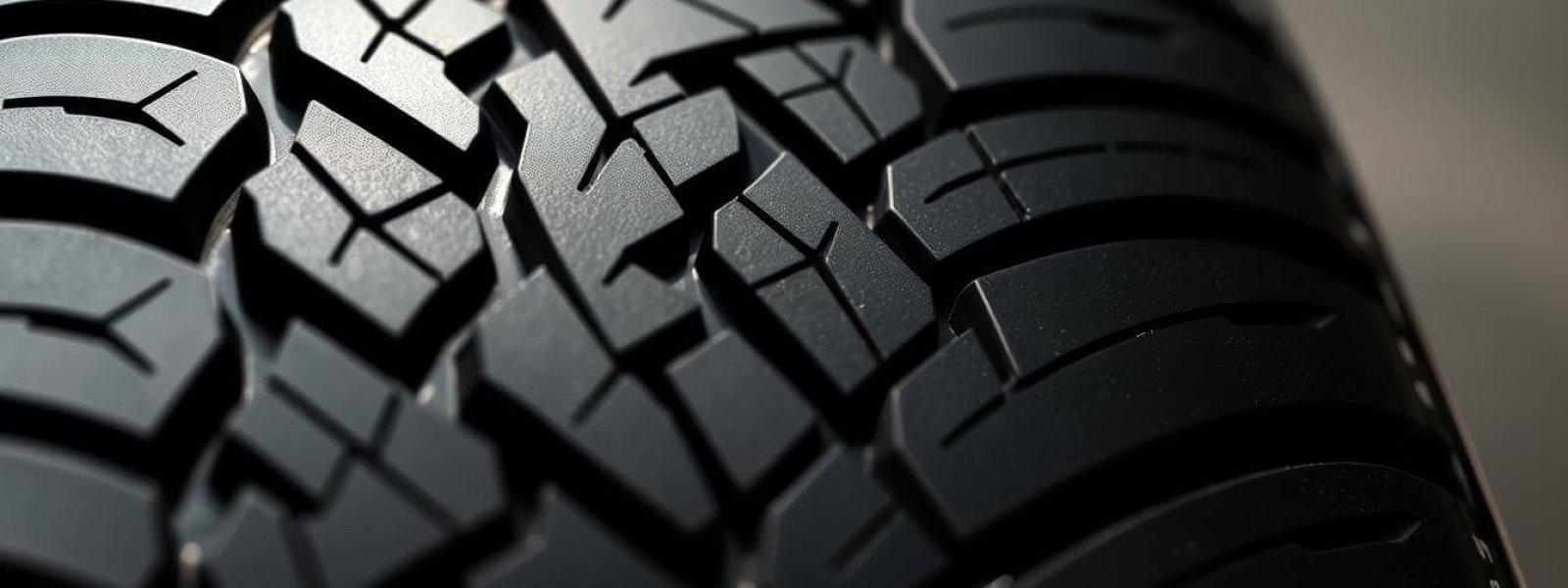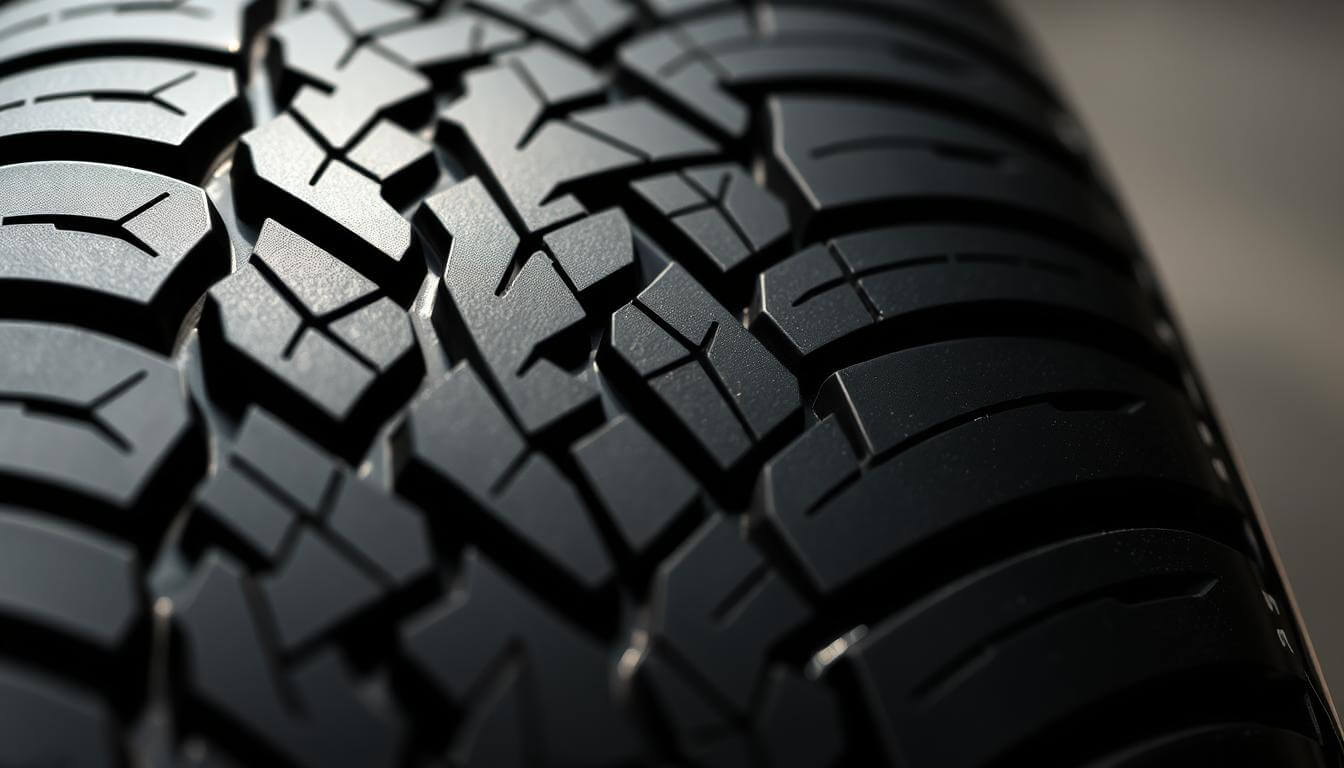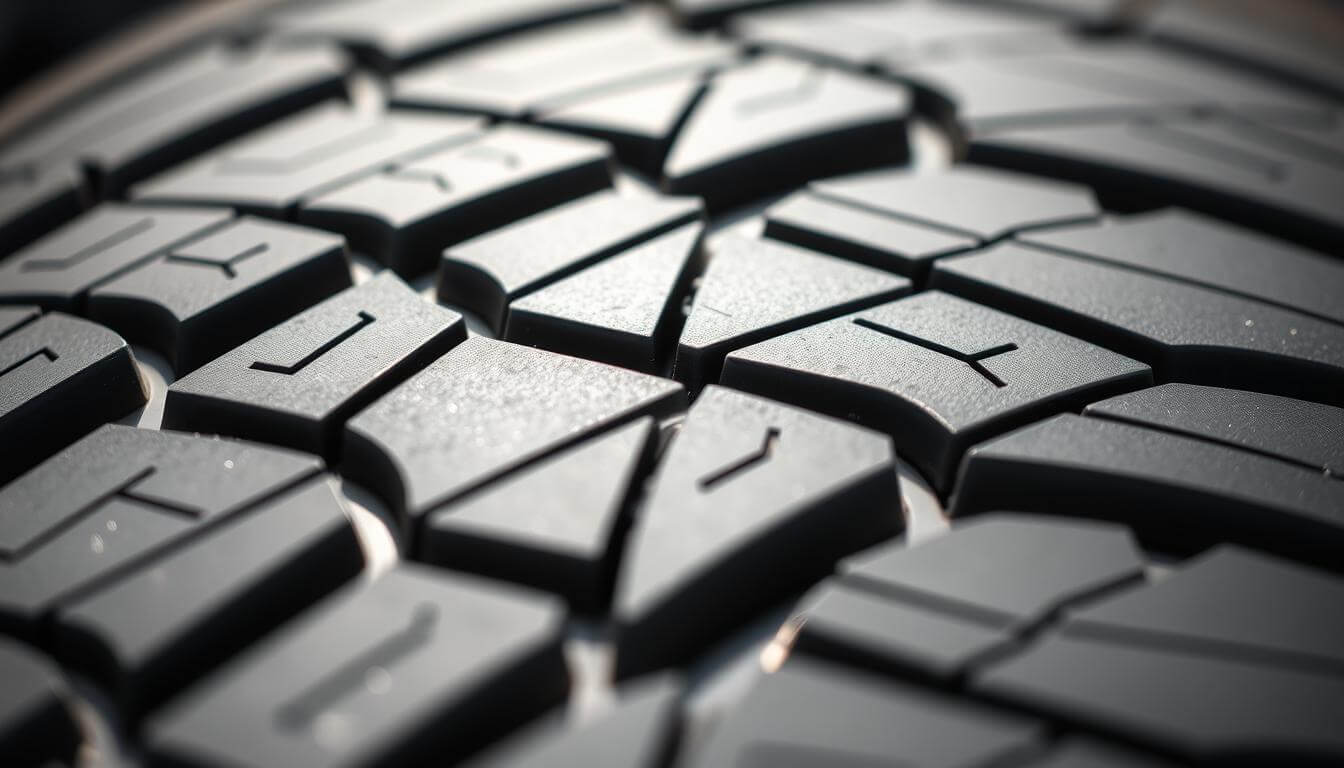Have you ever felt the difference in how your car handles on a hot, dry road compared to a cold, wet one? Summer tire tread design are made to maximize performance in warm weather, offering superior traction and control. Their unique tread patterns play a crucial role in enhancing your driving experience.
These tires feature a specific tread design with shallow depth and fewer grooves, which increases road-to-rubber contact. This design improves braking response, cornering, and overall vehicle performance in dry conditions. The heat-resistant compounds used prevent overheating, making them ideal for high-speed driving.
For instance, the Bridgestone Potenza RE050A exemplifies high-performance capabilities, perfect for sporty driving in warm weather. The tread design not only boosts grip but also reduces the risk of hydroplaning, ensuring safety on wet roads.
Key Takeaways
- Summer tires provide excellent road traction in hot, dry conditions.
- Shallow tread depth and reduced grooves enhance braking and cornering.
- Heat-resistant compounds improve durability at high speeds.
- Specific tread patterns reduce hydroplaning risk on wet roads.
- Examples like the Bridgestone Potenza RE050A showcase high-performance capabilities.
Understanding Tire Tread Design Concepts
When it comes to driving performance, the tread on your vehicle’s tires plays a vital role. The way the tread is designed can significantly impact how your car handles different road conditions.
Tread Depth and Its Role in Road Grip
Tread depth is one of the most critical factors in maintaining traction. A deeper tread provides more rubber in contact with the road, which can enhance grip. However, for summer driving, a shallower tread depth is often preferred. This design allows for more direct road contact, improving responsiveness and braking efficiency.
How Tread Patterns Enhance Handling and Braking
Beyond depth, the tread pattern itself is carefully crafted to optimize performance. Channels and grooves in the tread help to evacuate water, reducing the risk of hydroplaning on wet surfaces. This feature is especially important for maintaining control during sudden braking or sharp turns. The specific arrangement of these elements ensures consistent traction and stability, making every drive safer and more enjoyable.
In summary, the tread depth and pattern are engineered to deliver maximum performance. Whether you’re driving on dry roads or navigating through wet conditions, the right tread design ensures your vehicle remains stable and responsive.
Mastering Summer Tire Tread Design for Optimal Performance
Understanding how your vehicle’s tires interact with the road is crucial for enhancing your driving experience. The tread design of summer tires is engineered to provide exceptional grip and control, especially in warmer conditions. By focusing on fewer grooves and specialized rubber compounds, these tires deliver superior performance and safety.
Advantages of Fewer Grooves for Maximum Contact
The reduced number of grooves in summer tires allows for a larger contact patch with the road. This increased contact enhances traction, leading to improved braking and cornering capabilities. The Bridgestone Potenza RE050A is a prime example, showcasing how this design boosts grip on both dry and wet surfaces.
Improved Hydroplaning Resistance in Wet Conditions
Even with fewer grooves, summer tires effectively expel water, reducing the risk of hydroplaning. This feature ensures stability and control on wet roads, making every drive safer and more enjoyable.
Heat-Resistant Compounds and High-Speed Durability
Heat-resistant rubber compounds in summer tires prevent overheating, making them ideal for high-speed driving. These compounds maintain performance and reduce rolling resistance, ensuring durability and efficiency on the road.
| Tire Type | Tread Depth | Groove Details | Hydroplaning Resistance | High-Speed Durability |
|---|---|---|---|---|
| Summer | Shallow | Fewer Grooves | Excellent | High |
| All-Season | Medium | More Grooves | Good | Medium |
| Winter | Deeper | Multiple Grooves | Best | Low |
🚗 Ready to Upgrade Your Summer Tires for Better Grip and Performance?
If you’re noticing signs of tread wear or want to enhance your vehicle’s handling, now is the perfect time to invest in high-quality summer tires.
👉 Amazon offers a wide selection of top-rated summer tires for all vehicle types—and they also help you schedule professional tire installation in your area!
🔗 Explore Summer Tires on Amazon + Book Local Installation
Comparing Summer, All-Season, and Winter Tire Capabilities
When selecting tires, understanding the differences between summer, all-season, and winter tires is essential for optimal performance. Each type is designed for specific conditions, ensuring safety and efficiency on the road.
Key Differences in Tread Patterns and Rubber Compounds
Summer tires are built for warm weather, featuring shallow tread depth and fewer grooves. This design maximizes road contact, enhancing braking and cornering on dry roads. Their rubber compounds resist heat, making them ideal for high-speed driving.
All-season tires offer a balanced approach. With moderate tread depth and more grooves, they handle both wet and dry conditions effectively. This makes them a practical choice for drivers in varied climates.
Winter tires, on the other hand, have deep treads and specialized rubber that stays flexible in cold temperatures. This design provides superior grip on snow and ice, ensuring control during harsh winter conditions.
Choosing the Right Tire for Your Driving Conditions
Consider your climate and driving habits when selecting tires. Summer tires excel in warm, dry conditions, while all-season tires are versatile for moderate weather. Winter tires are a must for snowy and icy regions.
For optimal performance and safety, match your tire choice to your environment and vehicle specifications.If you’re unsure, consulting a professional can help you make the best decision.
☀️ Don’t Wait Until Your Tread Wears Out — Get Your New Summer Tires Today!
Whether you’re upgrading for performance or replacing worn-out tires, Amazon makes it easy to find the perfect set of summer tires. Plus, you can take advantage of their local tire mounting services, so you don’t have to worry about installation logistics.
🔗 Browse the Best Summer Tires on Amazon + Schedule Mounting in Your Area
Conclusion
When it comes to driving performance, the tread on your vehicle’s tires plays a vital role. The tread depth and pattern are engineered to deliver maximum performance. Whether you’re driving on dry roads or navigating through wet conditions, the right tread design ensures your vehicle remains stable and responsive.
In summary, the tread depth and pattern are crucial for optimal performance. Summer tires, with their shallow tread depth and fewer grooves, offer superior grip and control in warm weather. They excel in delivering enhanced grip, fast response, and reliable braking in both dry and mild wet conditions. However, it’s important to remember that summer tires are not suitable for winter weather.
Understanding how your vehicle’s tires interact with the road is crucial for enhancing your driving experience. The tread design of summer tires is engineered to provide exceptional grip and control, especially in warmer conditions. By focusing on fewer grooves and specialized rubber compounds, these tires deliver superior performance and safety.
For optimal performance and safety, match your tire choice to your environment and vehicle specifications. Consider your climate and driving habits when selecting tires. Summer tires excel in warm, dry conditions, while all-season tires are versatile for moderate weather. Winter tires are a must for snowy and icy regions.
For optimal performance and safety, match your tire choice to your environment and vehicle specifications. If you’re unsure, consulting a professional can help you make the best decision.
Looking for a complete summer tire resource, including performance, durability, storage, and expert buying tips?
Don’t miss our in-depth guide that covers everything you need to know:
👉 Everything You Need to Know About Summer Tires: A Powerful & Reliable Summer Tires Guide in 2025
FAQ
1. What type of tire is best for summer driving?
The best type of tire for warm weather is a summer tire, specifically engineered for optimal grip, braking distances, and excellent curve stability during the summer season. Summer tires still outperform all-season options when it comes to traction on dry and wet roads during the summer months.
2. How does tread design impact summer tire performance?
Tread compounds, groove patterns, and sipes all affect how well your tires grip the road. Directional tires typically channel water better to reduce the chance to hydroplane, while non-directional tires may offer more even wear. Larger tread blocks and fewer sipes help maximize performance and stability in dry conditions.
3. How do I check if my tires need replacement?
You can check at home using a tire tread gauge or even a coin. Insert the pin or coin into the tread grooves and observe how much of the coin remains uncovered. If your tire tread depth is low, your tires may not be safe for driving, especially in wet conditions.
4. What are tire tread indicators and how do they work?
Tread wear indicators are small raised bars located between tread grooves. When these bars are flush with the tread surface, it’s time to replace your tires. These indicators provide a quick visual cue without needing a tire depth gauge.
5. How deep should the tread be on summer tires?
Summer tires need enough tread depth—typically at least 4/32 inches—to provide better traction and reduce the risk of hydroplaning. Use a depth gauge to get the highest gauge reading and ensure your tires are in near new condition.
6. Can I use summer tires in winter driving conditions?
Summer tires are not safe for winter driving conditions. Their tread compound hardens in cold temperatures, reducing flexibility and grip. For snow and ice, snow tires or all-season options are better suited.
7. Does tread depth affect braking distances?
Yes. Worn tire tread leads to longer braking distances, especially on wet roads. Regularly checking the depth ensures your tires are safe for driving and still offer optimal performance.
8. How often should I check my tire tread?
It’s recommended to have your tread depth checked at least every couple of months, or schedule an appointment with a tire professional after a lot of mileage or seasonal changes. Keep a tire tread gauge in your glove compartment for quick checks.
9. How can I tell if my tires are directional or non-directional?
Directional tires will have an arrow on the sidewall indicating the correct rotation direction. Non-directional tires can be mounted in any direction and are easier to rotate for even wear across all 4 tires.
10. Can tread patterns help reduce the risk of hydroplaning?
Yes. Tread covers and groove designs help evacuate water and prevent your car tires from hydroplaning. Well-maintained tread depth is critical for maintaining traction in wet weather.


